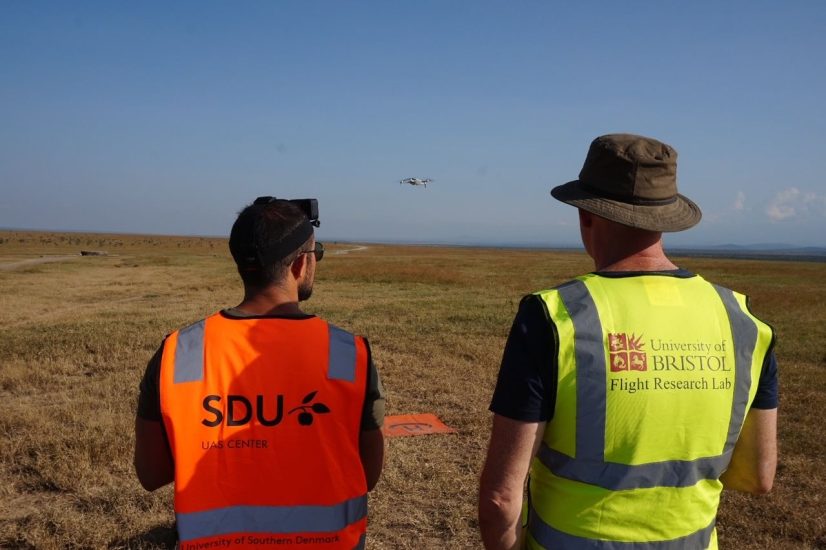An EU-funded project has achieved five days of successful beyond visual line of sight (BVLOS) drone flights for the purposes of wildlife monitoring and conservation efforts in Ol Pejeta, Kenya.
The drone was flown up to 2 km from the remote pilot. Following initial flight tests and practical exercises in contingency and emergency procedures, the WildDrone team observed and documented animals such as zebras, antelopes, buffaloes, elephants and rhinos under BVLOS conditions.
Writing on LinkedIn, Kjeld Jensen, associate professor and vice head of the UAS centre at the University of Southern Denmark (SDU), which coordinates the project, said the team managed to test a first version of the WildBridge AI software which identifies and tracks animals in real-time, populating a map with their locations.
“Our flights were the culmination of six months of work applying for a BVLOS authorisation from the Kenya Civil Aviation Authority and Kenya Air Force in collaboration with Kenya Flying Labs,” Jensen said.
“The lower airspace above Ol Pejeta is quite active and as such a challenge to operate in, however we experienced excellent support from the nearby Kenya Air Force ATC with whom we coordinated our flights,” Jensen continued. “We monitored the airband VHF and used our AirTrack software to increase our airspace situational awareness.”
WildDrone PhD candidate Guy Maalouf shared further details in another LinkedIn post. “To ensure safe BVLOS operations, we developed and refined a set of operational procedures based on the SORA methodology, focusing on minimising both ground and air risks. Navigating the military airspace and nearby airstrips presented unique challenges, but thanks to David Guerin’s [African Drone Forum] ATC expertise and communication with the military ATC, and the use of AirTrack, a piece of software developed at SDU that allows us to track ADS-B signals, we ensured safe drone operations.”
In addition to the drone-related risks, Maalouf said the team’s operational procedures took into account the risk of wildlife to the team on the ground.
The WildDrone team plans to return to Ol Pejeta in January 2025 and conduct more complex drone operations for wildlife conservation building upon lessons learned from these initial BVLOS flights.
For more information




